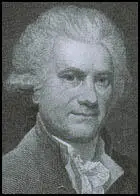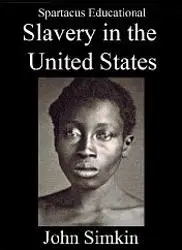John Horne Tooke

John Horne, the third of the seven children and the youngest son of John Horne, a prosperous poulterer, and Elizabeth, née Horne, was born on 25th June 1736 in Newport Street, Westminster. His biographer, Michael T. Davis, has argued: "Horne was born into a respectable middle-class family. His mother was a benevolent figure, persuading her husband to donate money to the Middlesex Hospital, of which he later became one of the first treasurers. Horne's father was a man of singularly independent character, exemplified by a lawsuit with Frederick, prince of Wales, who lived next door to the Horne family in Leicester House. When some of the prince's officials sought a passage to Newport market by making an opening through a wall belonging to the Horne property without seeking permission, Horne's father brought the case to court and won. Having achieved his purpose, John Horne senior allowed the doorway to be reopened and was accordingly appointed by the prince as the official supplier of poultry to his household. Despite the immediate honour of this appointment, the prince's sudden death in 1751 saw a debt of several thousand pounds unrecovered."
Educated at Eton and Cambridge University, he became a lawyer and later, to please his father, in 1760 was ordained a priest and became a minister in Brentford. In the early 1760s John Horne became interested in politics. He became friendly with John Wilkes, a man whose journal, The North Briton, had upset George III and his Tory government. In 1765 Horne wrote an anonymous pamphlet, The Petition of an Englishman , that defended Wilkes.
On 20th February 1769, a lawyer, John Glynn, organised a meeting at the London Tavern to discuss the refusal of the House of Commons to accept the election of John Wilkes. Glynn subscribed £3,340 to form an organisation, the Bill of Rights Society, that would help support the campaign to reinstate Wilkes. Robert Morris, a Welsh barrister, was elected secretary, John Horne Tooke became treasurer. Other members of the group included John Sawbridge, the MP for Hythe, Sir Cecil Wray, MP for East Retford and Sir John Molesworth, MP for Cornwall.
Meetings of the Bill of Rights Society took place fortnightly at the London Tavern. At first the main objective of the society was to "maintain and defend the liberty of the subject, and to support the laws and constitution of the country." John Horne, who eventually became the most important figure in the Society, believed that the organisation should campaign for a radical programme of parliamentary reform. Tooke managed to do this but some members disagreed and it was this conflict that eventually brought the Bill of Rights Society to an end in 1771. Horne now formed his own group, the Constitutional Society, to campaign for for parliamentary reform. In 1775 Horne attacked the government's actions in America and was imprisoned for libel. After his release from prison Horne joined with Major John Cartwright to establish the Society for Constitutional Information.
in December, 1798. It shows John Horne Tooke as an artist. The portraits are of the leaders of the Whigs and Tories in the House of Commons, Charles Fox (entitled 'Deceit') and William Pitt (entitled 'Truth').
John Horne's campaign against the Enclosure Acts brought him to the attention of William Tooke, a wealthy landowner from Purley. The two men became close friends and in 1782 Horne adopted Tooke's surname. John Horne Tooke was strongly influenced by the ideas of Tom Paine and after the publication of The Rights of Man in 1791 he began to work closely with Thomas Hardy and the Corresponding Society.
At the end of 1793 supporters of parliamentary reform held a convention in Edinburgh. The leaders of the convention were arrested, tried for sedition, and sentenced to fourteen years transportation. The reformers were determined not to be beaten and John Horne Tooke, Thomas Hardy and John Thelwall began to organise another convention. When the authorities heard what was happening, Tooke and the other two men were arrested and committed to the Tower of London and charged with high treason.
The trial began at the Old Bailey on 28th October, 1794. The prosecution, led by Lord Eldon, argued that the men were guilty of treason as they organised meetings where people were encouraged to disobey King and Parliament. However, the prosecution was unable to provide any evidence that Tooke and his co-defendants had attempted to do this and the jury returned a verdict of "Not Guilty".
After 1794 John Horne Tooke became less radical in his political ideas. He still favoured parliamentary reform but was opposed to universal suffrage. This gained him the support of the Whigs and Lord Camelford, arranged for John Horne Tooke to represent the rotten borough of Old Sarum. After Tooke's election in January, 1801, his admission to the House of Commons was opposed because he was a minister of the church. Lord Temple led the fight against the entry of Tooke and eventually a bill was passed making it impossible for clergymen to become members of the House of Commons.
John Horne Tooke died on 18th March 1812 in Wimbledon and, despite his wish to be buried in his garden, his daughters and sister insisted on a traditional Christian funeral, which took place on 30th March 1812 at St Mary's Church in Ealing.
Slavery in the United States (£1.29)

